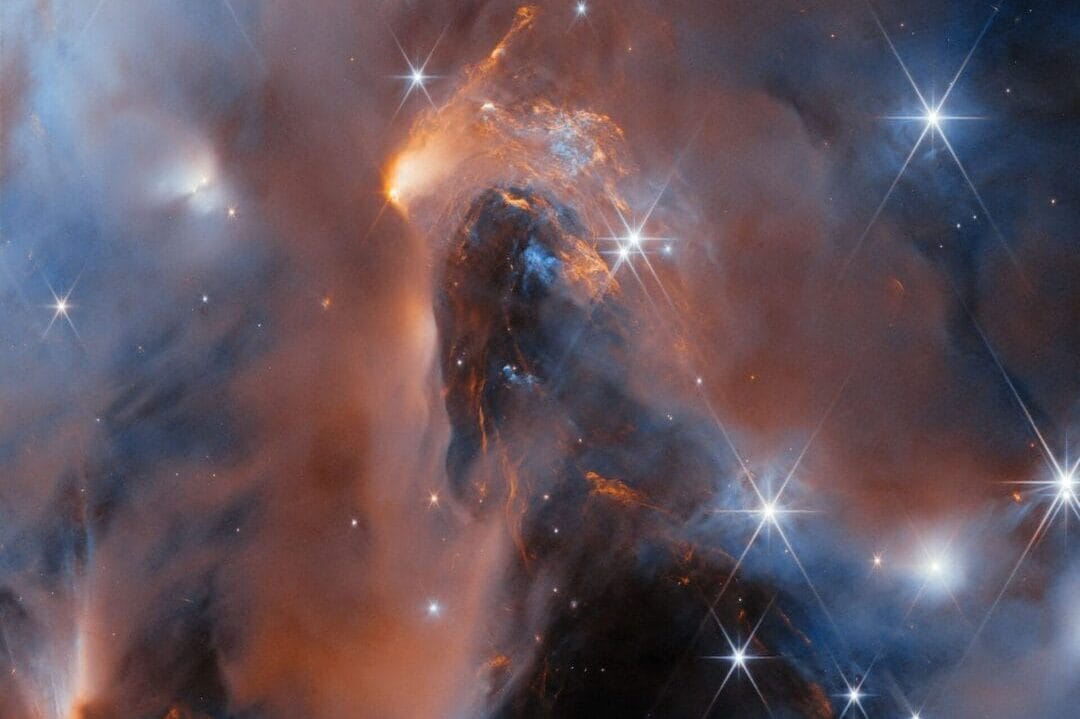Webb telescope spots 6 rogue worlds within glowing cosmic cloud
(CNN) — Astronomers have spotted six rogue worlds, or cosmic objects that don’t orbit stars, using the James Webb Space Telescope.
The celestial bodies are slightly bigger than Jupiter, and the observations are shedding light on how stars and planets form across the universe.
The Webb telescope peered into a star-forming nebula, or a cloud of gas and dust, named NGC 1333 located 960 light-years away within a larger gas and dust cloud called the Perseus molecular cloud. Turbulence inside the nebula creates knots that collapse due to gravity, giving birth to stars.
The space observatory captured a dramatic, glowing image of the cosmic cloud. While the Hubble Space Telescope has previously captured images of the nebula, dust obscured its view of the star formation process.
But Webb — which is capable of observing the universe in infrared light — was able to look right through the dust.
Within the nebula are newborn stars, brown dwarfs and objects with planet-like masses, all about five to 10 times more massive than Jupiter. These are the lowest-mass objects found to have been created by a process that typically leads to the formation of stars, which are much larger than planets, or brown dwarfs — celestial objects that aren’t quite a star or a planet. Brown dwarfs are more massive than planets but not quite as massive as stars.
The findings are part of a study that has been accepted for publication in The Astronomical Journal.
“We used Webb’s unprecedented sensitivity at infrared wavelengths to search for the faintest members of a young star cluster, seeking to address a fundamental question in astronomy: How light an object can form like a star?” said senior study author Ray Jayawardhana, provost and astrophysicist at Johns Hopkins University, in a statement. “It turns out the smallest free-floating objects that form like stars overlap in mass with giant exoplanets circling nearby stars.”
The observations are helping astronomers better understand the different ways that stellar objects form.
“We are probing the very limits of the star forming process,” said lead study author Adam Langeveld, also an astrophysicist at Johns Hopkins, in a statement. “If you have an object that looks like a young Jupiter, is it possible that it could have become a star under the right conditions? This is important context for understanding both star and planet formation.”
The birth of rogue worlds
Typically, stars form from clouds of gas and dust. Then, leftover material from the star’s formation leads to the creation of planets. But it’s possible that stellar bodies can also form similar to planets, the study authors said.
“Our observations confirm that nature produces planetary mass objects in at least two different ways — from the contraction of a cloud of gas and dust, the way stars form, and in disks of gas and dust around young stars, as Jupiter in our own solar system did,” Jayawardhana said.
One of the newly detected objects has an estimated mass of five Jupiters, or about 1,600 Earths. A dusty disk surrounding the object shows that it likely formed similar to a star. And given that disks of gas and dust may give rise to planets, it’s possible that the planetlike object could also form “mini” planets.
“Those tiny objects with masses comparable to giant planets may themselves be able to form their own planets,” said study coauthor Aleks Scholz, an astrophysicist at the University of St. Andrews in the United Kingdom, in a statement. “This might be a nursery of a miniature planetary system, on a scale much smaller than our solar system.”
The team used Webb to study the nebula in detail in infrared light, which is invisible to the human eye, and spotted a rare occurrence: a brown dwarf with a companion object that also has the mass of a planet.
“It’s likely that such a pair formed the way binary star systems do, from a cloud fragmenting as it contracted,” Jayawardhana said.
“The diversity of systems that nature has produced is remarkable and pushes us to refine our models of star and planet formation.”
Astronomers are still trying to glean insights into how free-floating rogue worlds form and evolve. It’s possible that the planet-like bodies initially form around and orbit stars but are kicked away by gravitational interactions with other bodies.
Rogue planets account for about 10% of the celestial bodies within the nebula studied by Webb, but these mysterious objects are still considered rare across the Milky Way.
In the future, the team will use Webb to study more of these objects to see how they may form their own mini planetary systems.
And when it launches in May 2027, NASA’s Nancy Grace Roman Space Telescope could find hundreds of rogue planets and help astronomers uncover the secrets of these nomadic worlds.



